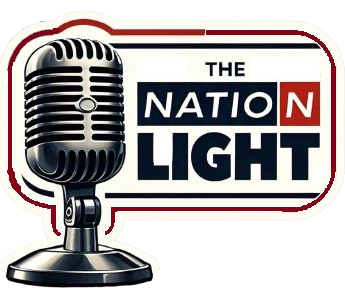World powers are locked in a silent battle again. From Russia’s bold moves to China’s rise and America’s response — Cold War 2.0 is real, and it’s happening now.
Introduction: Cold War 2.0 and the Echoes of the Past
The term Cold War 2.0 is no longer a dramatic label thrown around in think tanks and newsrooms—it’s a haunting reality. As global tensions escalate between the USA, Russia, and China, geopolitical experts and ordinary citizens alike are questioning if we are heading back into an era dominated by shadow diplomacy, military buildups, and ideological showdowns. But this time, the stakes are higher, the players more complex, and the weapons—both literal and digital—far more sophisticated.
What makes this different is not just the actors involved but the mechanisms of conflict. From cyber cold wars to proxy battles fought through diplomacy, finance, and digital manipulation, we’re witnessing the emergence of a modern cold war. As alliances shift and global superpowers draw red lines in contested regions like the Indo-Pacific and Eastern Europe, the parallels to the first Cold War grow undeniable. But are we just reliving history—or reshaping it?
With the rise of global alliances, talk of World War 3 fears, and increasing diplomatic tensions, it’s essential to understand how the past mirrors the present.
Cold War vs Cold War 2.0: What’s the Real Difference?
The phrase cold war vs cold war 2.0 isn’t just a catchy headline—it’s a historical lens that compares two pivotal global eras. The original Cold War was defined by the nuclear arms race, ideological conflict, and proxy wars across Asia, Africa, and Latin America. Back then, it was the USSR vs USA, representing communism vs capitalism.
Cold War 2.0, however, is more nuanced. Instead of two monolithic superpowers, we now have a triangular faceoff between Russia, the USA, and China. The world is more interconnected, with cyber warfare, tech cold wars, and economic sanctions replacing traditional warfare. New players like India, the EU, and even non-state actors are shaping the battlefield.
We’re witnessing a military standoff on a global level—be it NATO’s eastward expansion or Russia’s aggression in Ukraine. The echoes of the iron curtain, Berlin Wall, and Soviet Union collapse are evident in modern headlines. Understanding this evolution is critical to decoding our current trajectory.
Modern Cold War: The Invisible Battlefield
Welcome to the modern cold war, a conflict not just of tanks and troops but of data, influence, and ideology. Today’s war is waged over TikTok bans, semiconductor exports, diplomatic spy balloons, and cyberattacks on infrastructure.
We’ve entered a period where a war without weapons can paralyze entire nations. China-US tensions have escalated in the Indo-Pacific, where strategies like the indo-pacific strategy aim to curb China’s influence. Meanwhile, Russian geopolitics continues to destabilize Eastern Europe, and US foreign policy recalibrates to address multiple threats simultaneously.
This invisible war also shapes public opinion through media manipulation and global alliances. Disinformation campaigns on social platforms, secret diplomacy, and technological rivalry dominate this era of geopolitics.
For more insight into how power struggles shape the world, check out our article on the Partition of India — a historical turning point still relevant today.
Are We in a New Cold War? All Signs Point to Yes
So, are we in a new cold war? All indicators scream yes. From increased military budgets to constant diplomatic blame games, the signs are everywhere. Whether it’s NATO vs Russia posturing, proxy wars in Africa and the Middle East, or sanctions against Chinese tech firms, the tension is thick and global.
Even civil protests like the Hands Off Protest 2025 reflect rising dissatisfaction with how governments are maneuvering in this volatile environment.
History repeating itself examples include moves like China’s expansion into the South China Sea—echoing the Soviet’s tactics during the Cold War. We’re also seeing increased ideological conflicts fueled by rising nationalism and censorship.
This modern standoff is more than political—it’s a cultural and technological clash with long-term consequences. Cold war definition today must include economic warfare, trade battles, and cyber sabotage.
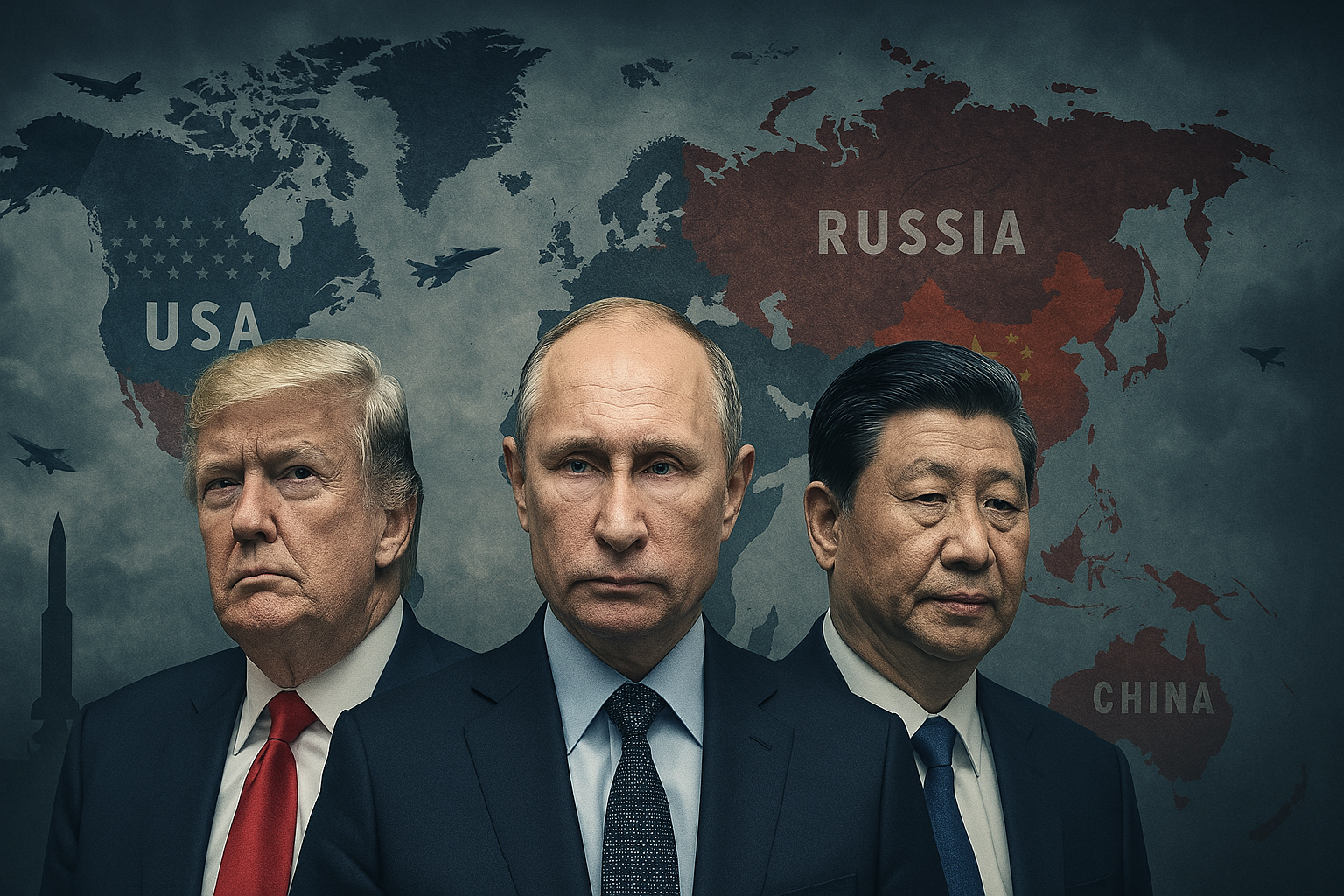
USA Russia China Conflict: The New Power Triangle
The USA Russia China conflict has become the focal point of geopolitical rivalry 2025. Each nation brings a unique strategy to this complex power dynamic:
- The USA is reasserting its influence through economic sanctions, global alliances, and diplomacy.
- Russia is testing Western resolve in Ukraine and beyond.
- China is playing the long game—expanding economically and technologically.
These strategies have triggered intense diplomatic tension, military standoffs, and a new kind of global tech cold war.
As inflation and economic instability spread, conflicts among these powers influence your daily life. For a deeper understanding, read our piece on Inflation vs Deflation.
📰 Don’t let your knowledge stay outdated.
Bookmark The Nation Light and join the educational & knowledge revolution!
You may also like 👇
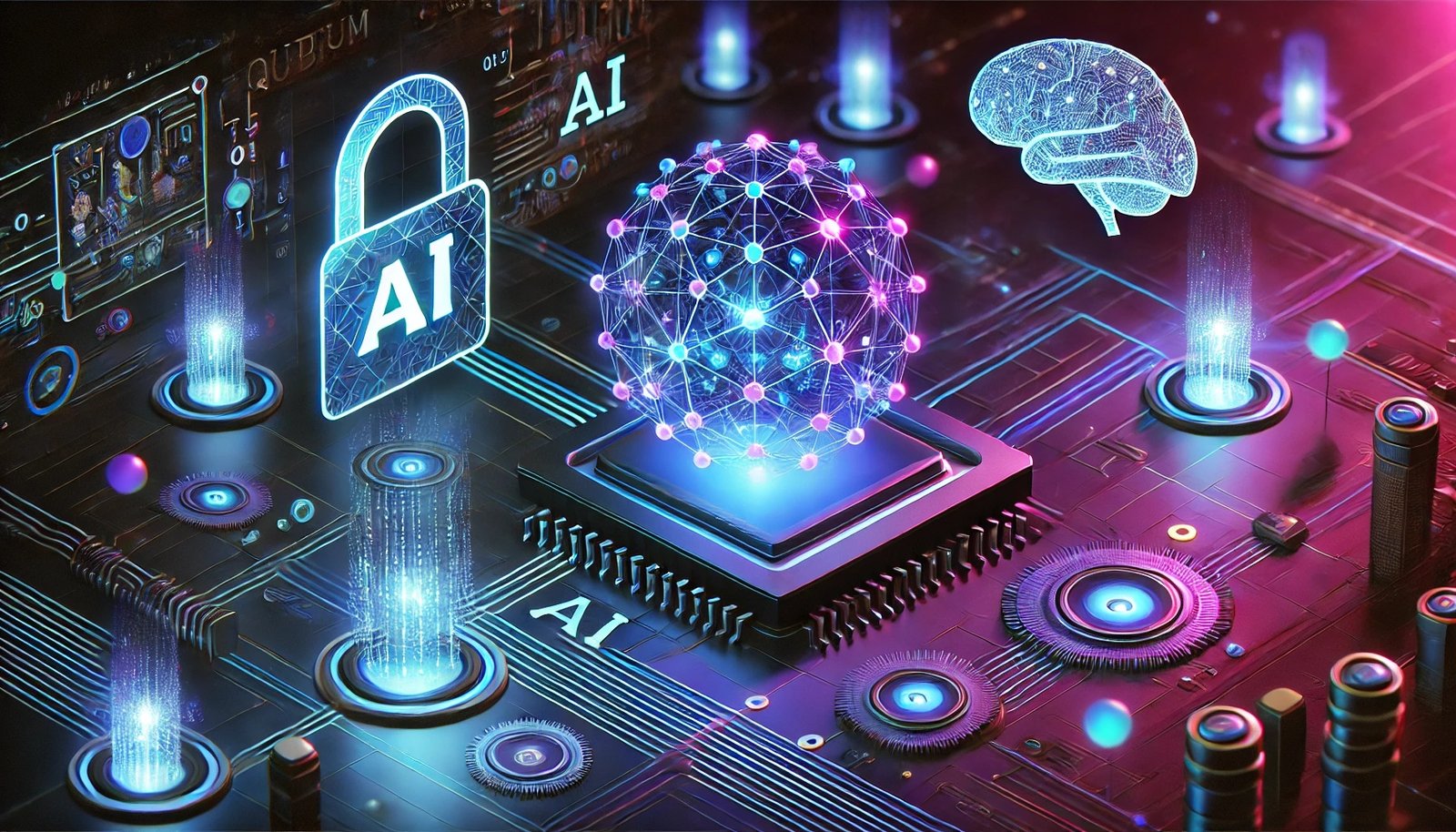 Quantum Computing (QC): 10 Game-Changing Impacts on AI & Cybersecurity You Can’t Ignore! – THE NATION LIGHT
Quantum Computing (QC): 10 Game-Changing Impacts on AI & Cybersecurity You Can’t Ignore! – THE NATION LIGHT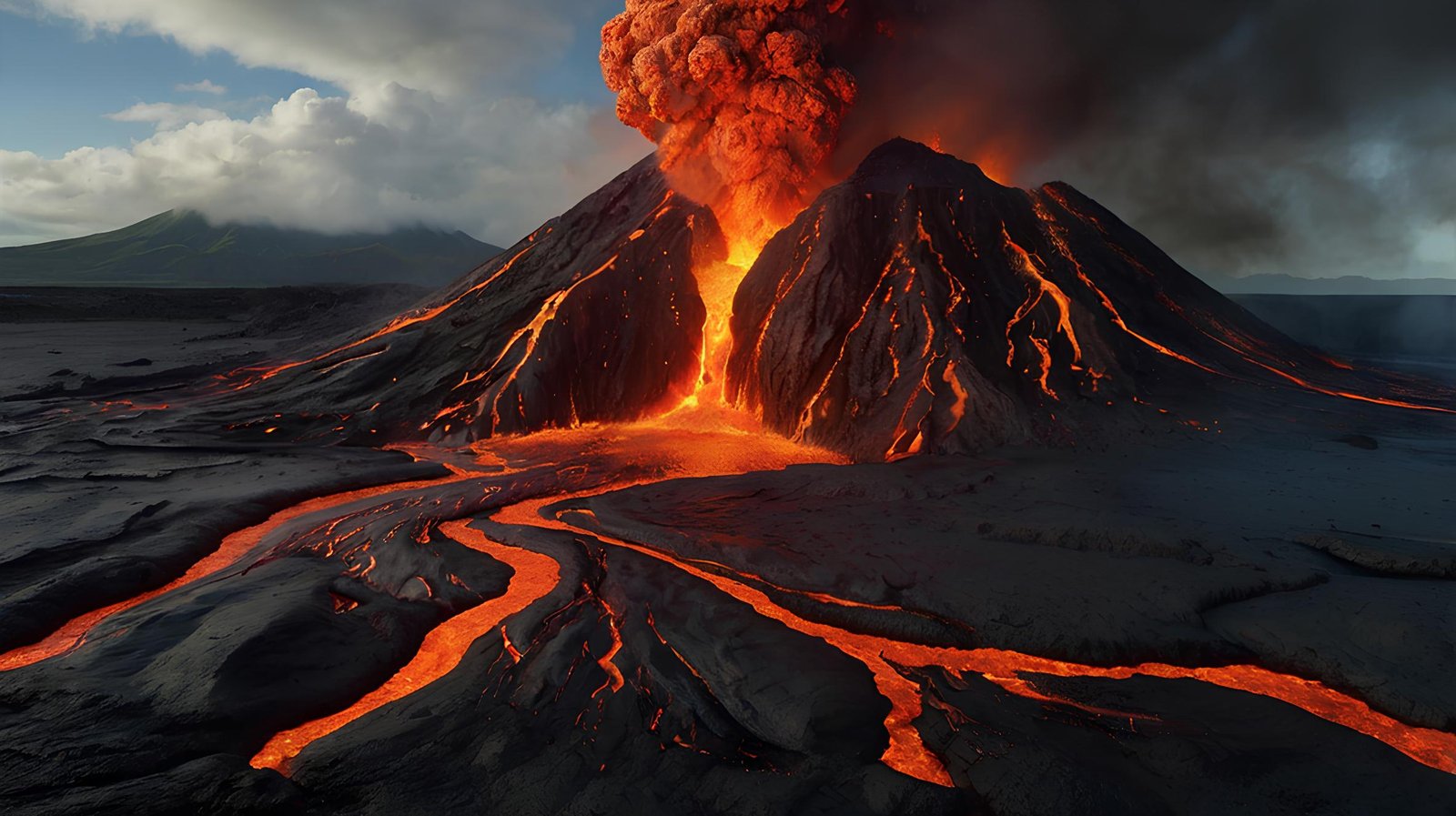 7 Powerful How Volcanic Eruptions Shape the Earth’s Landforms – THE NATION LIGHT
7 Powerful How Volcanic Eruptions Shape the Earth’s Landforms – THE NATION LIGHT 10 Powerful Daily Habits for Mental Health: Reduce Stress & Boost Happiness Instantly! – THE NATION LIGHT
10 Powerful Daily Habits for Mental Health: Reduce Stress & Boost Happiness Instantly! – THE NATION LIGHT 6G Technology Revolution: How the Global Race is Shaping the Future of Connectivity in 2025 You Can’t Ignore!
6G Technology Revolution: How the Global Race is Shaping the Future of Connectivity in 2025 You Can’t Ignore!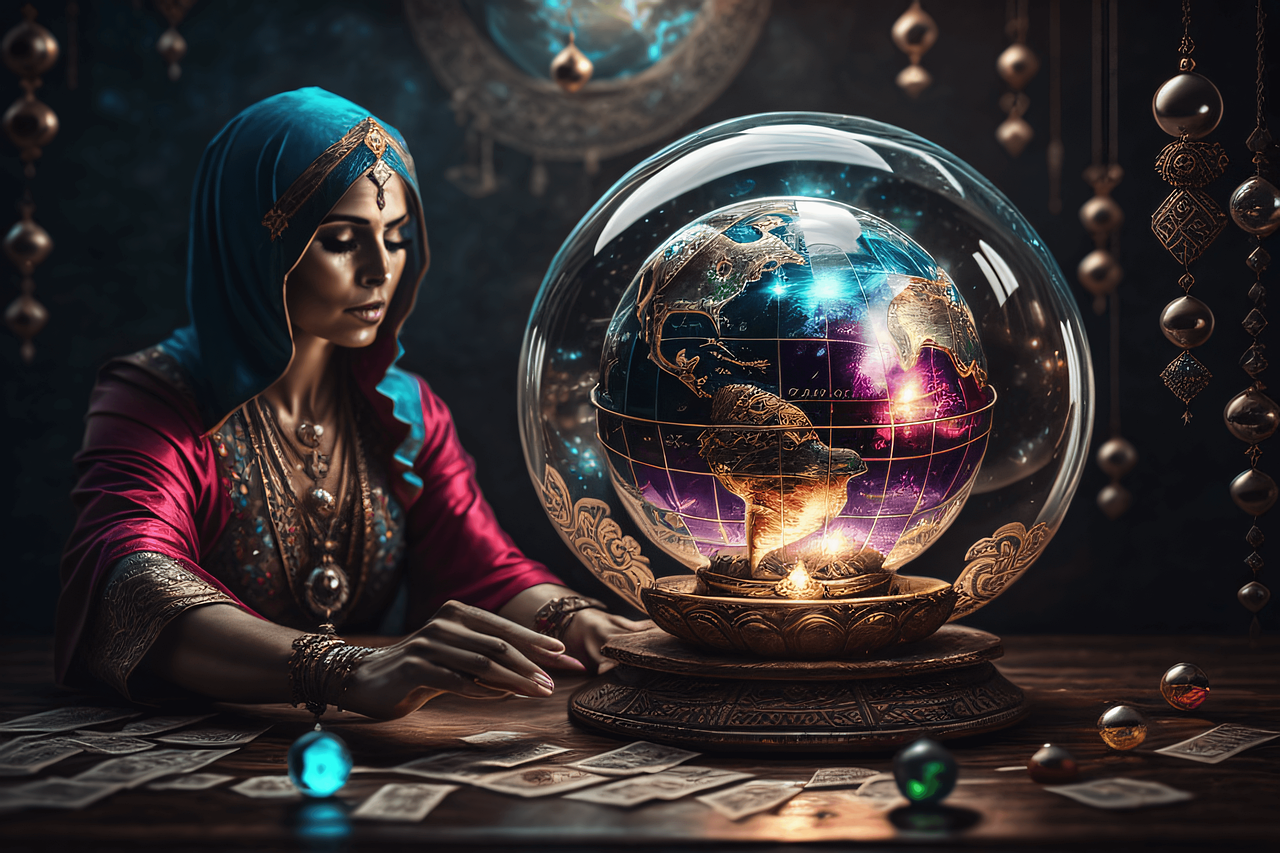 12 Zodiac Sign & Astrology Personality Traits Revealed: The Shocking Truth About Astrology and Personality!
12 Zodiac Sign & Astrology Personality Traits Revealed: The Shocking Truth About Astrology and Personality! 🔥Barbenheimer 2025: 5 Explosive Oscars Predictions, Barbie 2 Sequel News & Oppenheimer Rumors (Hollywood Showdown)
🔥Barbenheimer 2025: 5 Explosive Oscars Predictions, Barbie 2 Sequel News & Oppenheimer Rumors (Hollywood Showdown)
Frequently Asked Questions (FAQs)
1. What is Cold War 2.0?
Cold War 2.0 refers to the current period of geopolitical tension primarily between the USA, Russia, and China, echoing the ideological, economic, and military rivalries of the original Cold War. It features elements like cyberwarfare, proxy conflicts, and trade wars, replacing traditional battlefield confrontations.
2. How is Cold War 2.0 different from the original Cold War?
Cold war vs cold war 2.0 highlights significant differences. Unlike the two-polar world of the past, Cold War 2.0 involves multipolar conflicts, with cyberattacks, tech sanctions, and global disinformation replacing nuclear standoffs and physical wars.
3. What defines the modern cold war?
The modern cold war is characterized by covert actions, information manipulation, and tech-based dominance. Nations are vying for supremacy in cyberspace, AI, and global trade rather than direct military conflict.
4. Are we in a new cold war today?
Yes, most global analysts agree that we are indeed in a new cold war. The alignment of rival blocs, aggressive diplomacy, and regional dominance efforts clearly mirror Cold War-era tensions, albeit in a modernized form.
5. What is causing the USA Russia China conflict?
The USA Russia China conflict is driven by power struggles over global dominance, control over tech infrastructure, strategic military positioning, and fundamentally opposed governance ideologies.
Conclusion
Cold War 2.0 isn’t a myth—it’s a living, breathing geopolitical reality. From ideological divides and economic blockades to digital espionage, the world’s leading powers are once again locked in a quiet but fierce rivalry. While the battlefield may have shifted from Europe to cyberspace and Southeast Asia, the global power struggle remains as dangerous as ever.
For those living in this era, awareness is no longer optional—it’s necessary for survival.
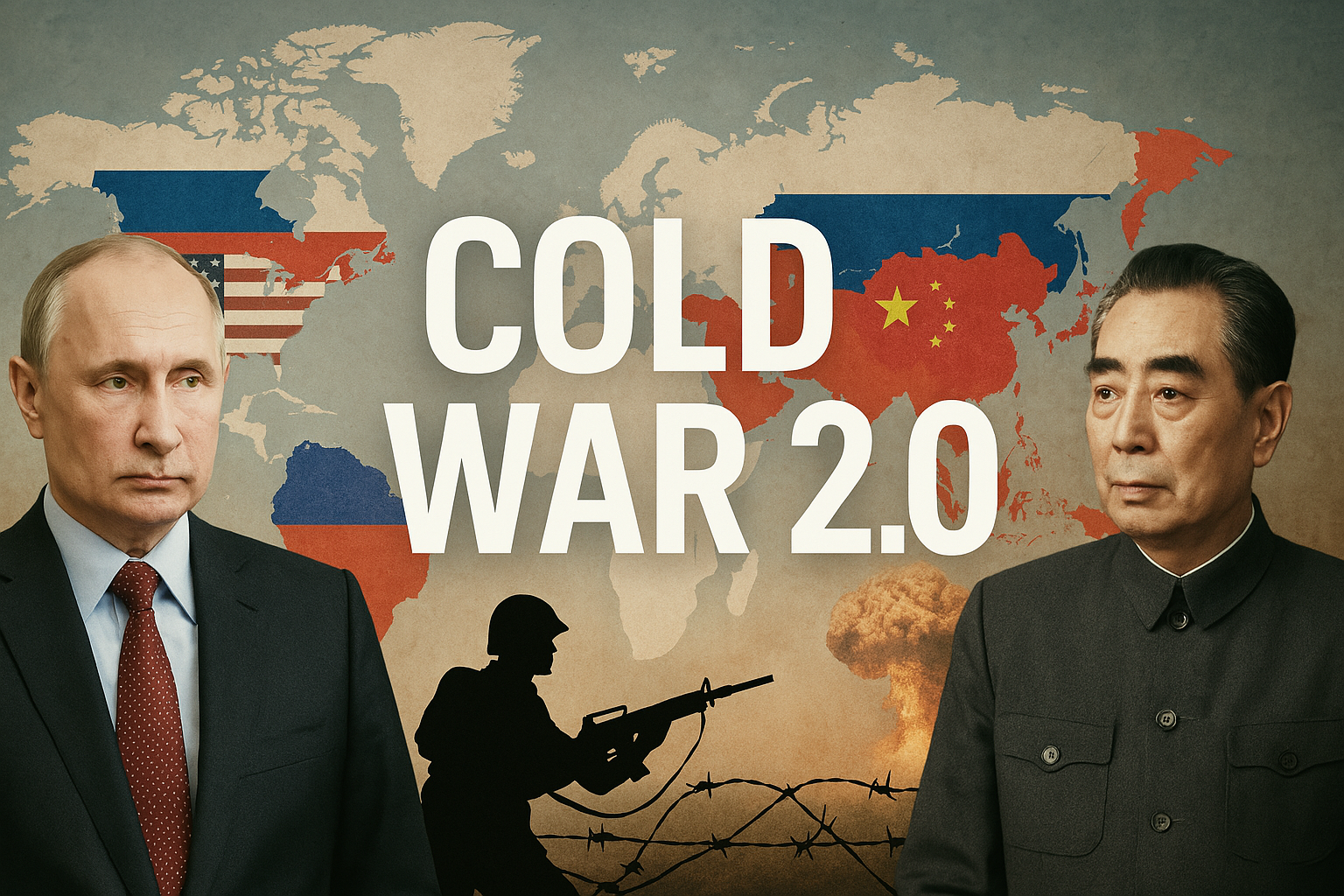
Final Takeaway
- Cold War 2.0 is real and unfolding globally.
- It involves cyber, tech, trade, and diplomatic conflicts.
- The USA, Russia, and China are the key players.
- Proxy wars and economic sanctions have replaced direct war.
- Global alliances are being reshaped and tested.
Credible Sources
- Brookings Institution – Brookings has published papers on modern deterrence theory, U.S. foreign policy, and China–Russia strategic cooperation — all of which echo the strategic themes in your article. They also explore the digital cold war and economic warfare, making it a reliable and academically respected source.
- The Guardian / BBC News International – These media outlets provide up-to-date global coverage of escalating tensions, military build-ups, and cyber conflicts. Your article’s current affairs sections — like military drills, nuclear brinkmanship, and proxy conflicts — can be backed up by recent headlines and ongoing coverage from these globally trusted journalistic platforms.
- Council on Foreign Relations (CFR) – The CFR regularly publishes in-depth analyses of USA-Russia-China relations, nuclear strategy, and evolving geopolitical dynamics. Their coverage of recent military posturing, tech rivalries, and alliance shifts directly supports the theme of Cold War 2.0. It’s also a globally respected non-partisan think tank, which enhances credibility for your readers
📢 Don’t just scroll past history — be a part of it.
Share this article and follow us on Facebook, X (Twitter), and LinkedIn for bold takes and real-time updates.
🗞️ Stay updated with The Nation Light for factual, deep-dive reporting on the world’s most critical issues.
✅ Image Breakdown & Relevance:
🖼️ Visual Elements Used:
- Silhouettes of political leaders or symbolic human faces (each image will vary).
- Military elements or nuclear themes (to hint at arms race, military standoff).
- Global map overlay or national flags subtly present in the background.
- Tense, documentary-style mood with a muted color palette — echoing the seriousness of Cold War dynamics.
- Clashing contrasts between East (Russia, China) and West (USA, NATO allies) symbolized visually.
🎯 Relevance to Article Sections:
- The Cold War 2.0 theme is all about geopolitical rivalry and fear of conflict — the image visually mirrors that atmosphere.
- Fits perfectly with key parts like:
- “Modern Cold War explained”
- “USA-Russia-China-India relations”
- “History repeating itself”
📢📢 Unlock Your Online Potential with Hostinger!
Struggling with Social Media addiction? To know about The Dark Side of Social Media 👉 Click Here
💻 Turn your screen time into income by creating a money-making website! With Hostinger’s affordable hosting, you can:
- ✅ Build a blog, e-commerce store, or portfolio in minutes
- ✅ Monetize through ads, affiliate marketing, or digital products
- ✅ Enjoy lightning-fast speed & 99.9% uptime
🎁 Exclusive 20% OFF for our readers:
👉 Hostinger Affiliate Link
Why Hostinger?
- ✔ 1-click WordPress install (perfect for beginners!)
- ✔ 24/7 live chat support
- ✔ Free SSL certificate (secure your site)
🌟 Example Success:
Riya, a former Social Media addict, now earns ₹50,000/month from her self-care blog—built on Hostinger in just 2 days!
Your Turn:
- 1️⃣ Sign up with our link
- 2️⃣ Launch your site (use detox tips as content!)
- 3️⃣ Start earning while helping others break free!
💡 “Your phone is a goldmine—stop scrolling, start selling!”
Affiliate Disclosure: This page contains affiliate links. We may earn a commission at no extra cost to you.
